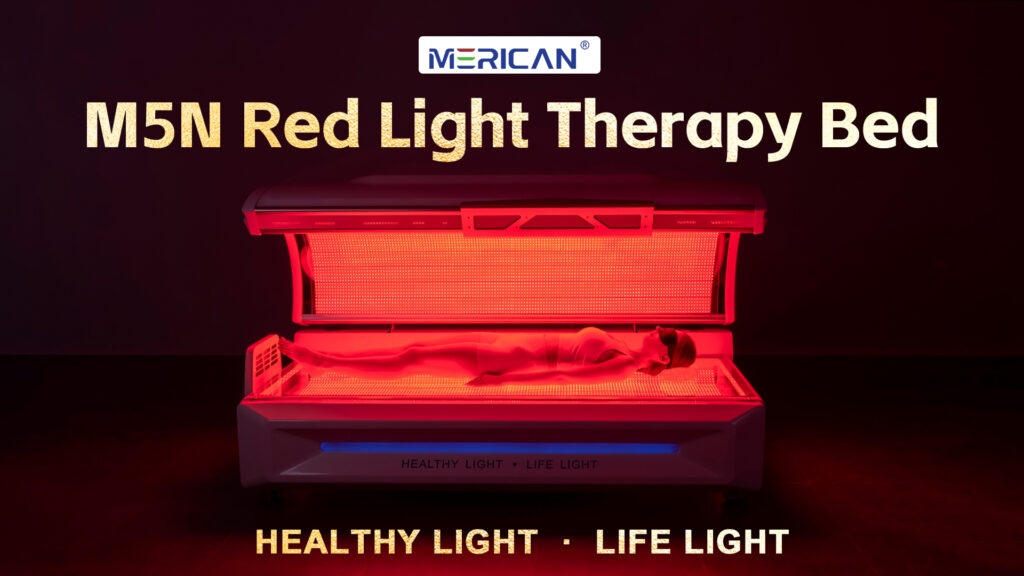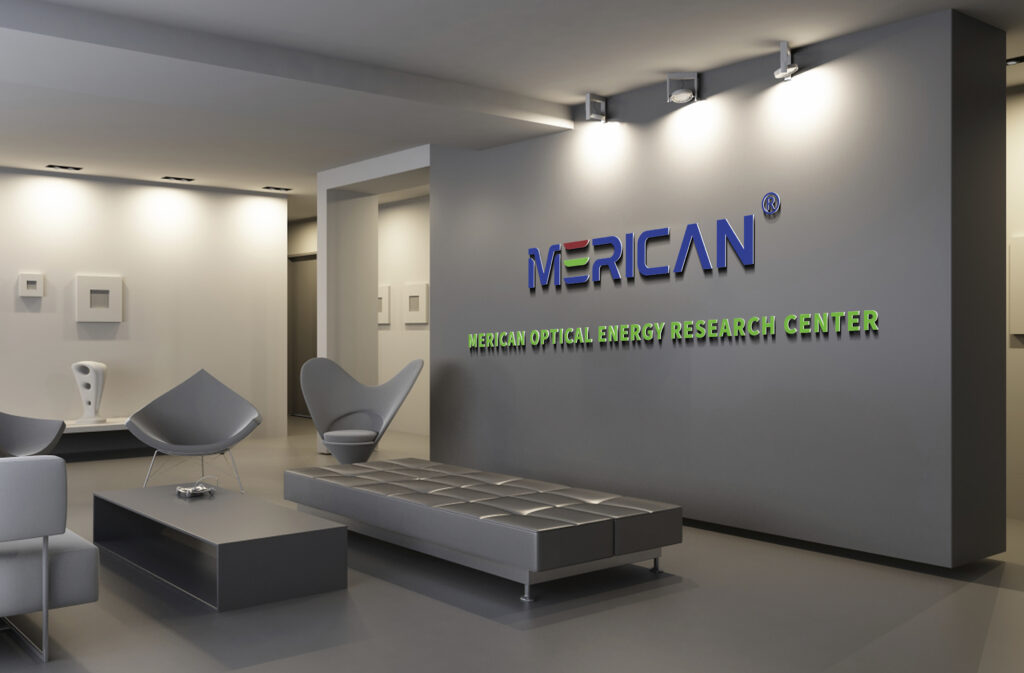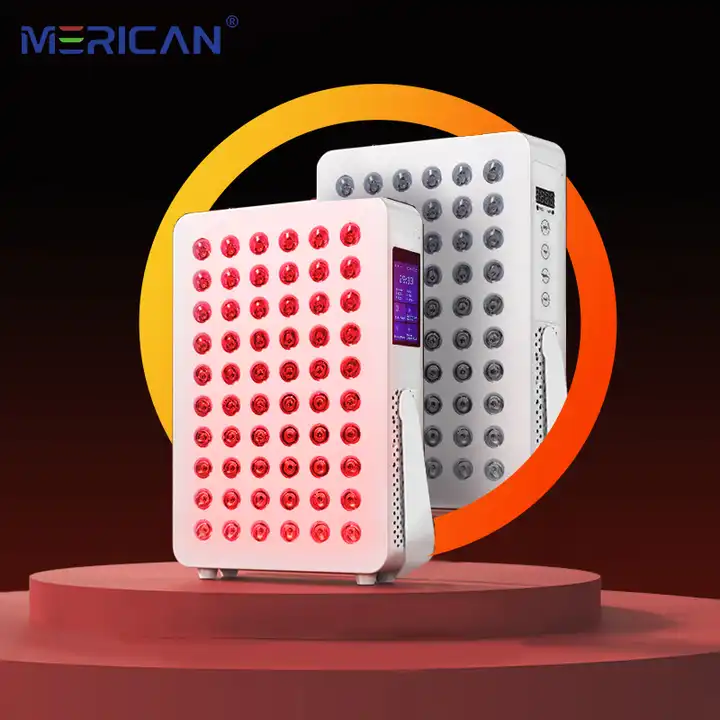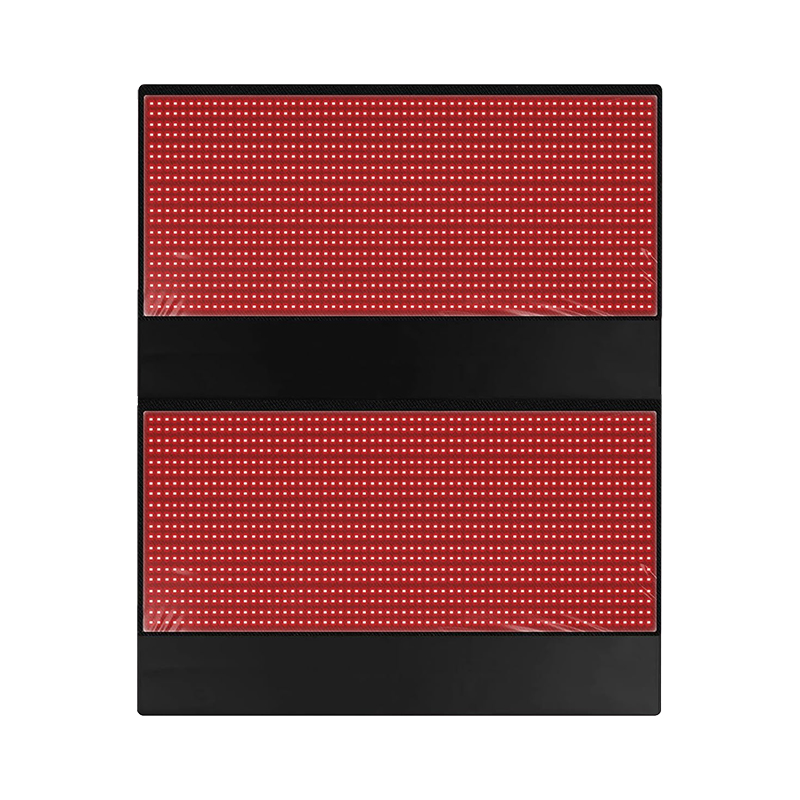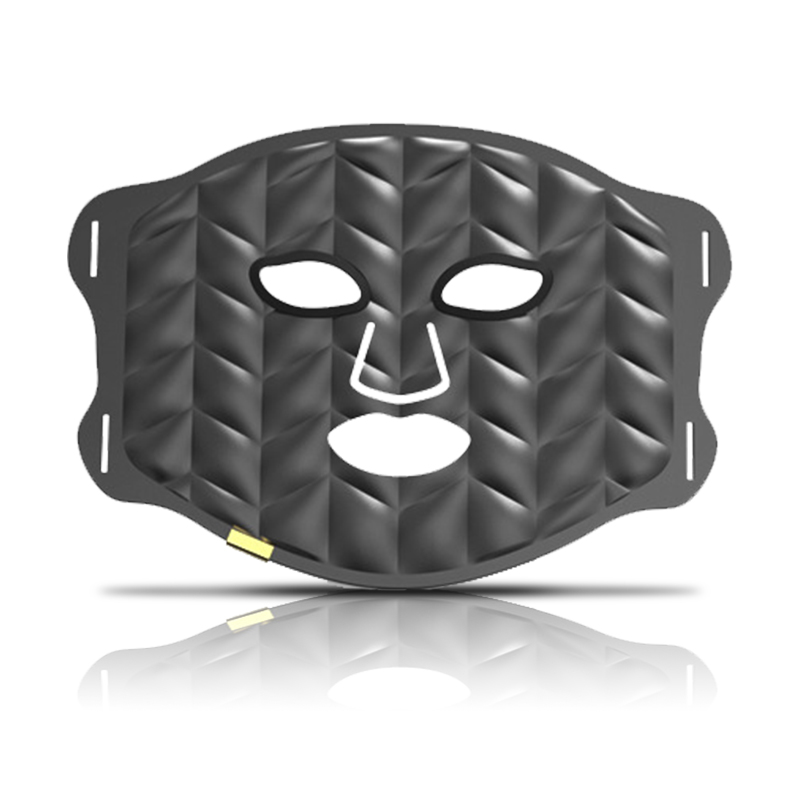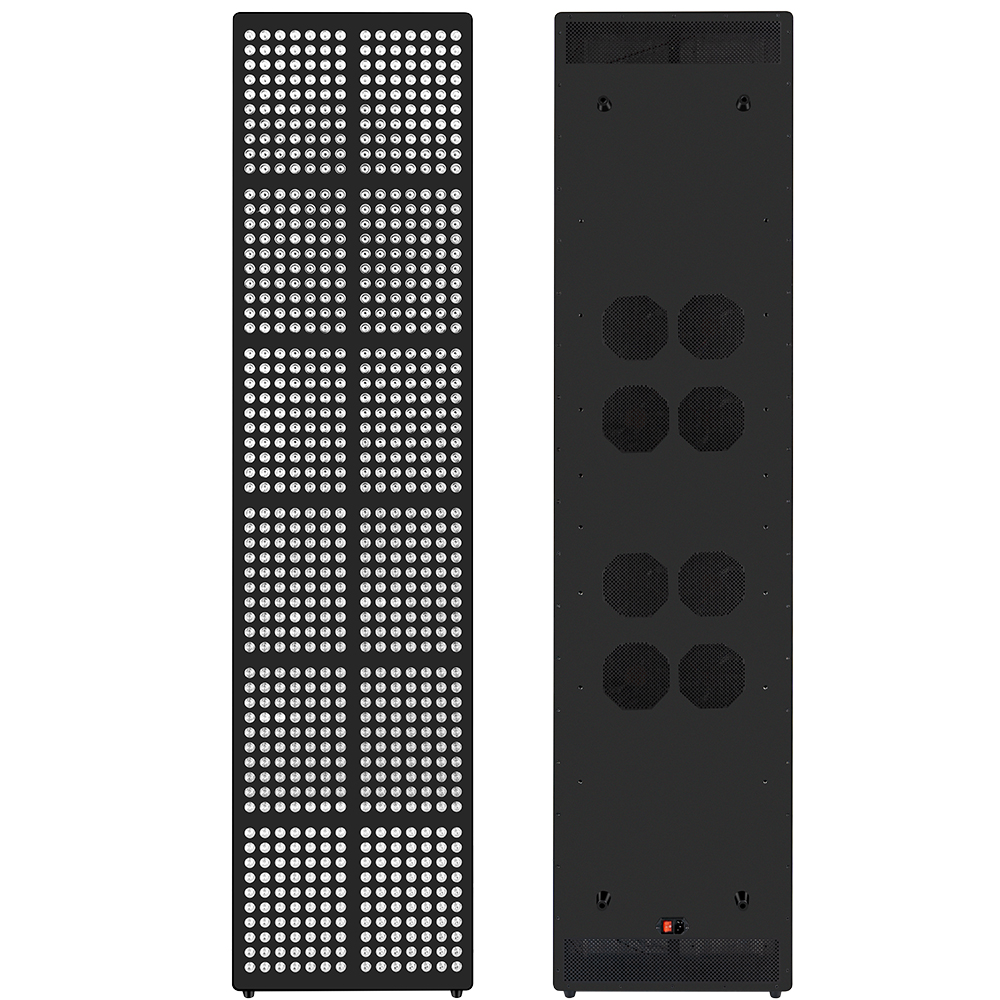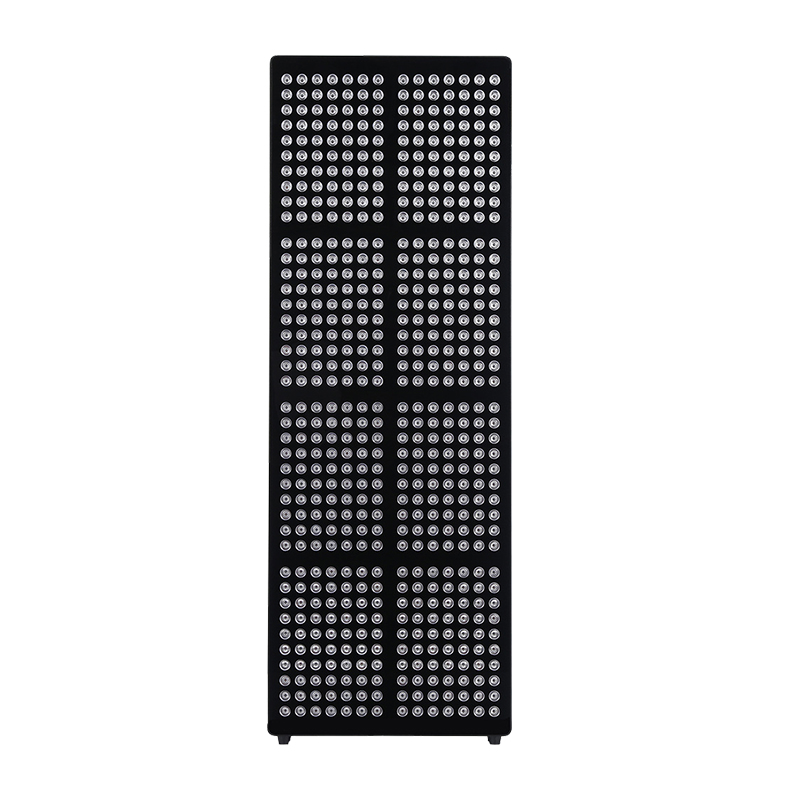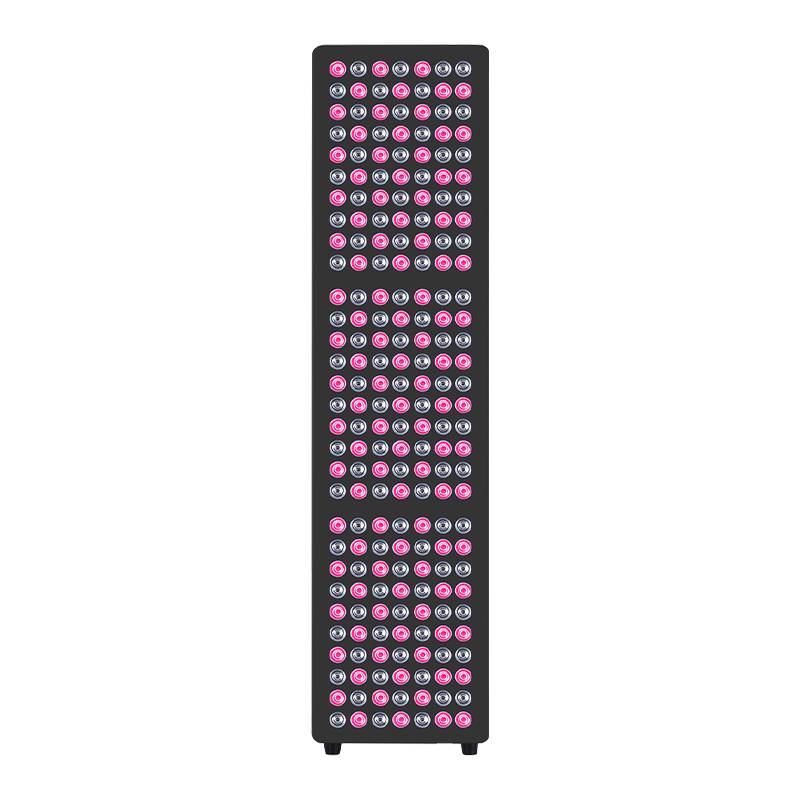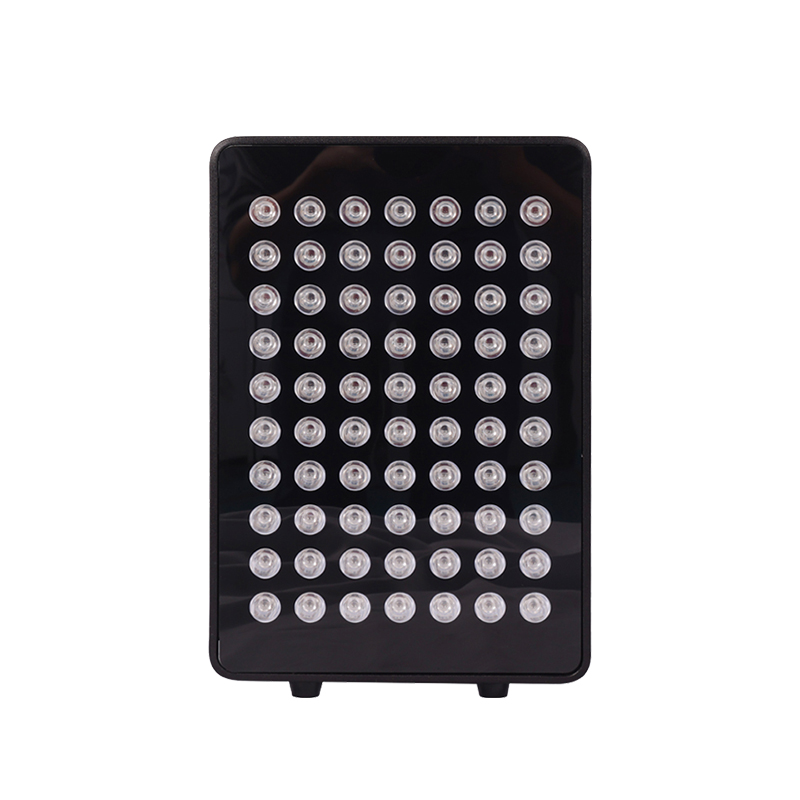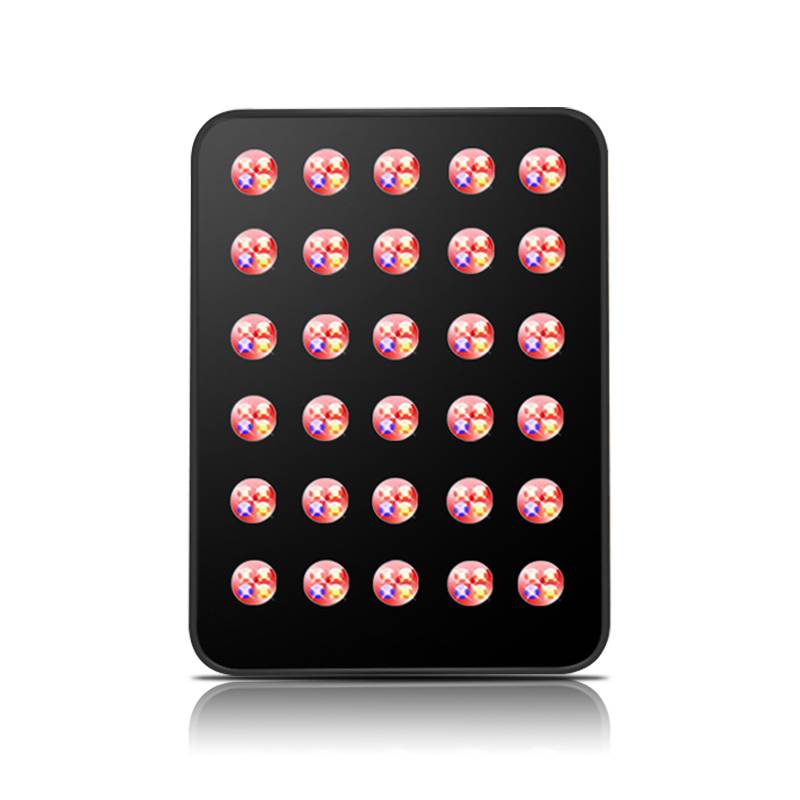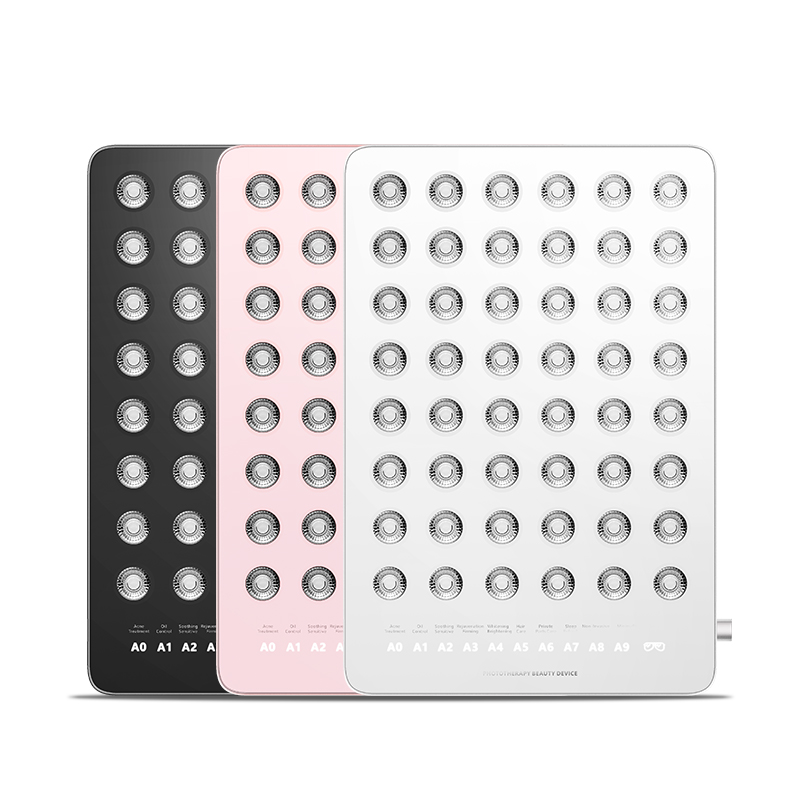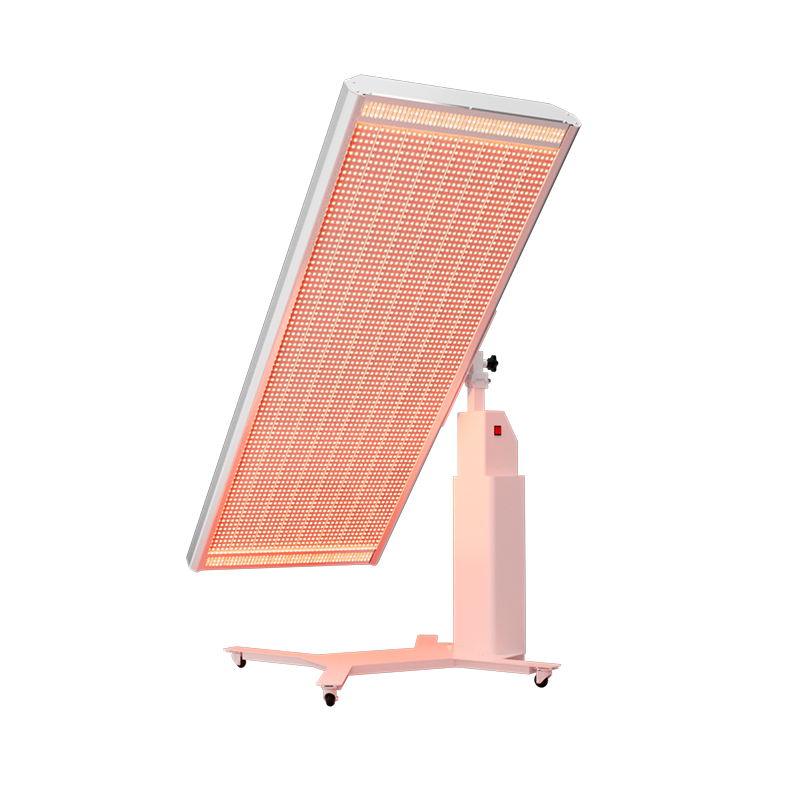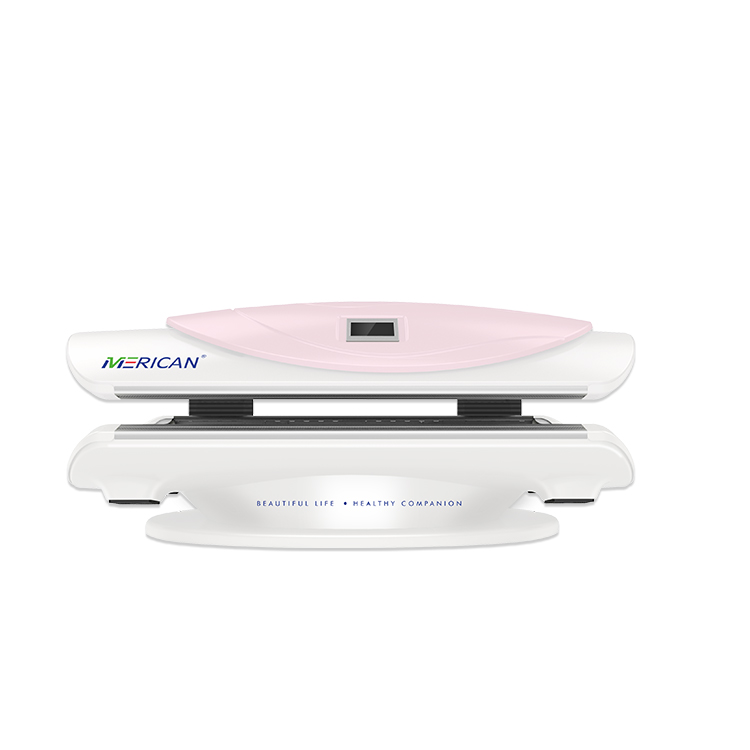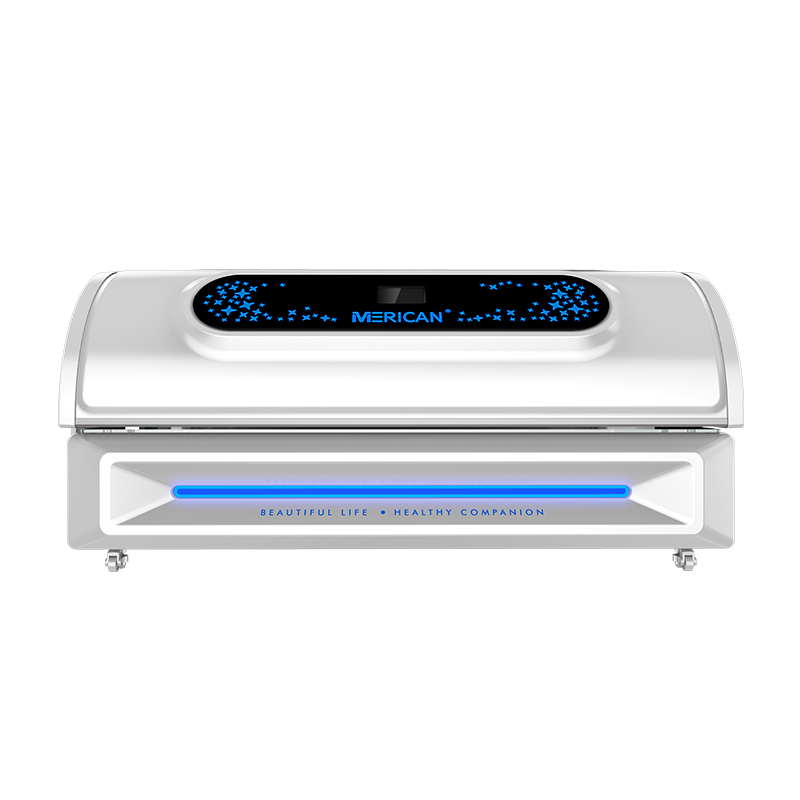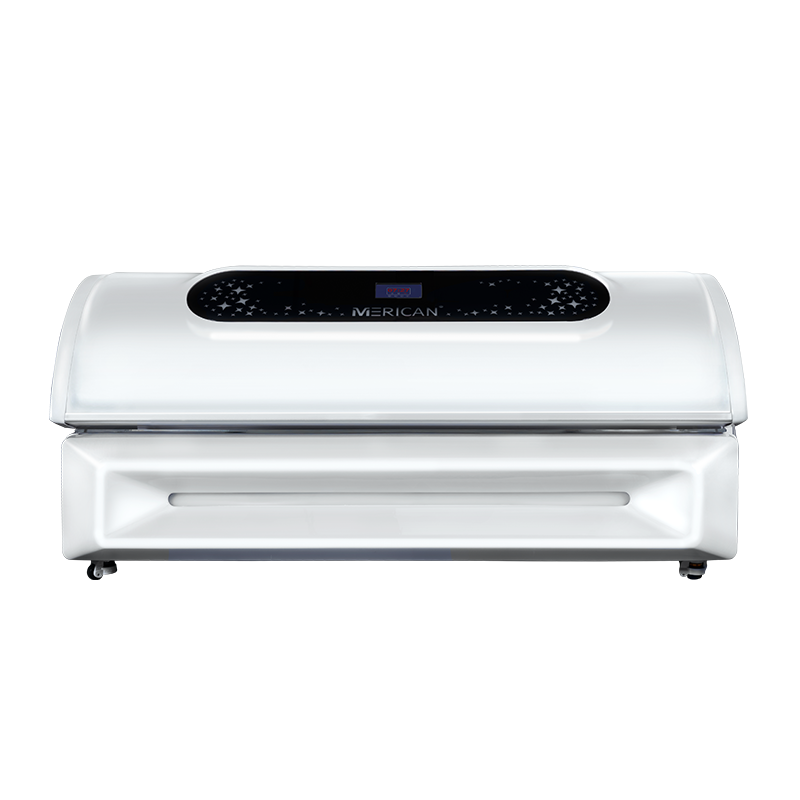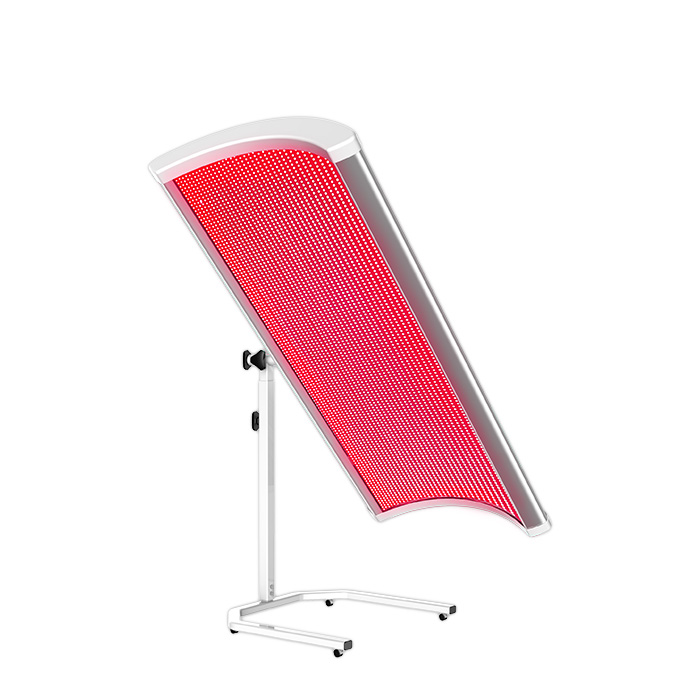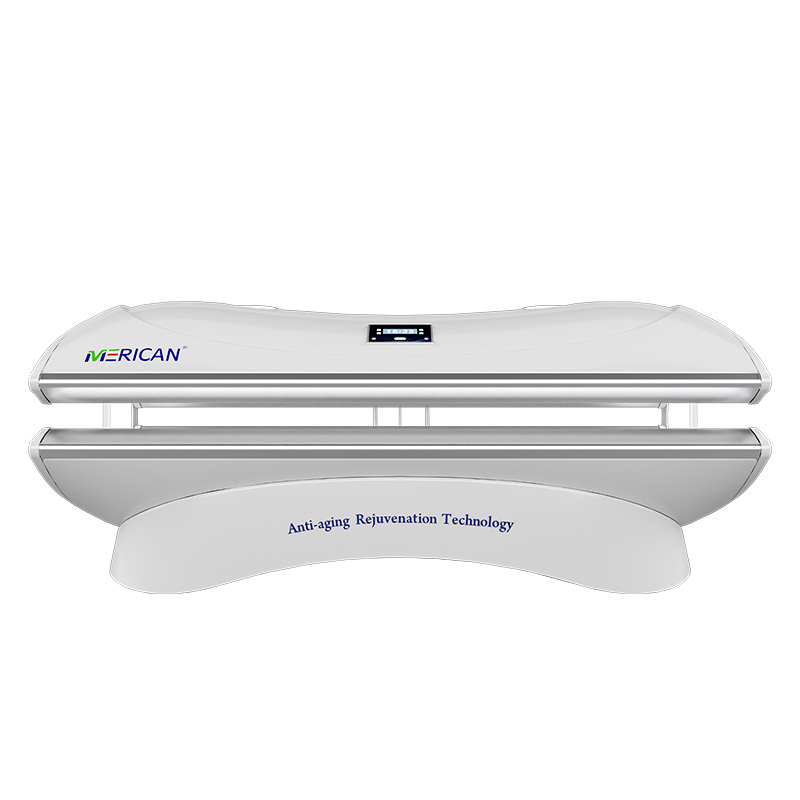قد يكون العلاج بالضوء الأحمر مفيدًا عندما يتعلق الأمر بتحسين مظهر الجلد, التئام الجروح, وإدارة الألم, وفقا للبحث الحالي.
يستخدم العلاج بالضوء الأحمر التطبيق العلاجي للطاقة الضوئية في المقام الأول للمساعدة في شفاء الأمراض الجلدية والعضلية, مثل التندب والتهاب الأوتار. عن طريق تعريض الجسم لطول موجي منخفض من الضوء الأحمر (620 ل 750 نانومتر), العلاج بالضوء الأحمر يحفز زيادة إنتاج الطاقة في الخلايا, والتي قد تؤدي إلى فوائد صحية لا تعد ولا تحصى.
في حين أن هناك دراسات واعدة تشير إلى فعالية العلاج بالضوء الأحمر, من الضروري إجراء المزيد من الأبحاث لتحديد فوائدها المحتملة بشكل كامل. لكن, يتم استخدامه بالفعل بنجاح في العديد من الإعدادات السريرية المختلفة.
واصل القراءة لمعرفة المزيد, بما في ذلك الفوائد المحتملة.
ما هو العلاج بالضوء الأحمر?
عندما يتعلق الأمر باكتشاف الفوائد المحتملة للعلاج بالضوء الأحمر, يمكنك في الواقع أن تشكر الرحلات إلى الفضاء الخارجي.
في أكتوبر 1995, ظهرت مصادر الضوء الأحمر - وهي جزء من الطيف المرئي للضوء - لأول مرة في رحلة مكوك الفضاء في الولايات المتحدة الثانية. مهمة المختبر الفضائي لمختبر الجاذبية الصغرى (اس تي اس-73, كولومبيا) كجزء من التجارب في نمو النبات.
"هنا لاحظ رواد الفضاء الذين كانوا يهتمون بغرف نمو النباتات أن الخدوش الصغيرة على أيديهم بدأت في الشفاء," يقول الباحث في العلاج بالضوء الأحمر جانيس ت. ثعبان البحر, دكتوراه., أستاذ في قسم العلوم الطبية الحيوية بجامعة ويسكونسن ميلووكي. "لا شيء يشفى في الفضاء, لذلك قامت وكالة ناسا بتمويل سنوات عديدة من الأبحاث باستخدام هذه الأضواء للتجارب البشرية.
أدت هذه الدراسات إلى اكتشاف إمكانية استخدام العلاج بالضوء الأحمر بشكل متعمد كنوع من الطب الضوئي, وهو تطبيق الضوء لأغراض الصحة والشفاء. يخترق الضوء المرئي الأنسجة البيولوجية, مثل الخلايا, الأنسجة العضلية, والأنسجة العصبية – ذات اللون الأحمر والأشعة تحت الحمراء القريبة (نير) الضوء يذهب أعمق من اللون الأخضر, أزرق, أو الضوء البنفسجي.
"مع العلاج بالضوء الأحمر, تعرض منطقة من جسمك لطول موجي محدد من الضوء الأحمر المنبعث من جهاز يمكن أن يتراوح حجمه من محمول باليد إلى كامل الجسم,يقول كيسي كيلي, (دكتور في الطب), المؤسس والمدير الطبي لشركة Case Integrated Health. "في الأساس, الضوء الأحمر يحفز خلاياك على العمل بمستوى أعلى.
التالي, نود أن نقدم أحد منتجاتنا: سرير العلاج بالضوء بالأشعة تحت الحمراء من Merican MB

سرير العلاج بالضوء بالأشعة تحت الحمراء من Merican MB اعتماد تصميم المقصورة الأوروبية ذات المستوى الفضائي, التصميم الداخلي بعد العديد من التجارب السريرية, والبحث بما يتماشى مع تصميم قوس جسم الإنسان, لذلك عندما يستلقي العملاء, يشعر أن الجسم كله مختوف, مريح جدا. مع وظيفة الموسيقى المدمجة, في التمتع بالجمال في نفس الوقت, الجسم كله والعقل للاسترخاء.
سرير العلاج بالضوء بالأشعة تحت الحمراء من Merican MB مزيج من الضوء الأحمر 633 نانومتر + بالقرب من الأشعة تحت الحمراء 810 نانومتر 850 نانومتر 940 نانومتر. مميزات إم بي 13020 المصابيح, كل تحكم مستقل الطول الموجي.
ميزة المنتج:
-اعتماد مصادر إضاءة صحية مستوردة من تايوان, آمنة, مستقر, وفعالة;
-من خلال اعتماد نظام إدارة التحكم بشاشة اللمس مع التحكم الذكي طوال العملية بأكملها, العملية بسيطة ومريحة.
-نظام حماية الدوائر المستقل, قاعدة, وتكنولوجيا فصل الجسم, ضمان بشكل فعال سلامة المشغلين والمستخدمين;
-نظام التحكم الإلكتروني العلمي والكامل مع توقيت, استفسار, ذاكرة, التحكم عن بعد
-نشأت من تصميم هيكل أوروبي متقدم وضغوط سلس, أنها آمنة, خاص, ومريح أثناء الاستخدام;
-تضمن وظيفة نظام تبريد الهواء المتقدم أن يدخل الجهاز العملية التالية بعد التبريد الكامل;
-مزود بنظام الصوت المحيطي, دعم Bluetooth تشغيل الموسيقى;
-اعتماد البلاستيك الهندسي المستورد ABS والألومنيوم الطيران, ضوء, آمنة ومستقرة;
-نظام التحكم في درجة الحرارة الذكي للجهاز بأكمله, مع وظيفة تبديد الحرارة التلقائي بدء التشغيل;
كيف يعمل العلاج بالضوء الأحمر?
يعمل العلاج بالضوء الأحمر على تسريع شفاء الجلد عن طريق اختراق الجزء السفلي من طبقة الأدمة في الجلد والطبقة الدهنية تحت الجلد وتحفيز إنتاج بروتينات الكولاجين والإيلاستين.. فهو يزيد من استقلاب الجلد للأكسجين الصحي والجزيئات الغذائية. هذا لطيف,ومع ذلك، فإن العلاج الفعال للغاية مفيد جدًا كأداة لمكافحة الشيخوخة وتجديد شباب الجلد ويساعد في تلاشي البقع الشمسية وفرط التصبغ عن طريق تحفيز خلايا الجلد.’ الحيوية والنفاذية. العلاج بالضوء الأحمر هو علاج غير جراحي,البديل غير الجراحي لشد الوجه, مساعدة البشرة على الحفاظ على مرونتها وثباتها مع تحسين ملمسها وتنعيم الخطوط والتجاعيد.
يخترق العلاج بالضوء الأحمر الجزء السفلي من طبقة الأدمة في الجلد ويصل إلى الطبقة الدهنية تحت الجلد, تحفيز إنتاج بروتينات الكولاجين والإيلاستين.
كيف تعمل الآلة?
اختر من نماذج التشغيل
يحتوي سرير العلاج بالضوء MB على نموذجين تشغيليين لعلاج مخصص:
-وضع الموجة المستمرة(الأسلحة الكيميائية)
-الوضع النبضي المتغير(1-15000هرتز)
زيادات نبض متعددة
يمكن لسرير العلاج بالضوء MB تغيير ترددات الضوء النبضي عن طريق 1,10, أو زيادات 100 هرتز.
التحكم المستقل في الطول الموجي
مع العلاج بالضوء MB, يمكنك التحكم في كل طول موجي بشكل مستقل للحصول على الجرعة المثالية في كل مرة.
مصممة جماليا
العلاج بالضوء MB له جمالية, تصميم راقي بقوة أطوال موجية متعددة في أوضاع نابضة أو مستمرة للحصول على مزيج مثالي من الشكل والوظيفة.
قرص التحكم اللاسلكي
تتحكم طاولة لاسلكية في العلاج بالضوء MB وتسمح لك بالتحكم في وحدات متعددة من مكان واحد.
الخبرة التي تهمك
Merican هو نظام تعديل حيوي ضوئي لكامل الجسم تم إنشاؤه من أساس تكنولوجيا الليزر الطبية.
الفوائد المحتملة للعلاج بالضوء الأحمر
العلاج بالضوء الأحمر له العديد من الاستخدامات والفوائد المحتملة.
لكن, وفقا لإلين ف. لو, (دكتور في الطب), مؤسس Future Bright Dermatology في نيويورك وأستاذ سريري مساعد في كلية طب وايل كورنيل, من المهم أن تضع في اعتبارك أن العديد من الدراسات المنشورة التي تستخدم الضوء الأحمر كعلاج غالبًا ما تكون صغيرة (أقل من 30 الناس), الدراسات الحيوانية أو المخبرية. نتيجة ل, يتفق معظم المهنيين الطبيين على أن هناك حاجة إلى مزيد من الأبحاث عالية الجودة مع عدد أكبر من المشاركين من البشر.
تبدو النتائج العلمية الأولية واعدة للغاية, رغم ذلك. فيما يلي بعض الحالات التي تظهر إمكانية العلاج بالضوء الأحمر.
تحسن في حالة الجلد والشعر
إن استخدام الضوء للتأثير على التغيرات الإيجابية في الجلد ليس مفهوماً جديداً. في الحقيقة, استخدم أطباء الجلد أطوال موجية ضوئية مختلفة في العلاجات لأكثر من ذلك 50 سنين, يشرح د. لو.
مع أخذ هذا في الاعتبار, إحدى الفوائد الأكثر شيوعًا للعلاج بالضوء الأحمر هي تحسينات الجلد. "لقد تم استخدامه لمعالجة علامات الشيخوخة وتلف الجلد, مثل الخطوط الدقيقة, التجاعيد, والبقع العمرية عن طريق تحفيز إنتاج الكولاجين," يقول د. كيلي.
ولعل أبرز فائدة للعلاج بالضوء الأحمر هي تحسين نوعية الجلد وملمسه, وفقا للدكتور. إلياس.
فيما يلي بعض التفاصيل التي تدعم هذه التطبيقات المحتملة للضوء الأحمر.
- الخطوط الدقيقة والتجاعيد. أ 2020 وجدت دراسة في مجلة الأدوية في الأمراض الجلدية أن الصمام الثنائي الباعث للضوء (قاد) قد يكون العلاج بالضوء فعالاً عندما يتعلق الأمر بمعالجة شيخوخة الجلد, مع العلاج بالضوء الأحمر يظهر نتائج واعدة لتأثيرات إيجابية لتجديد شباب الجلد من خلال تعزيز الخلايا الليفية - التي تصنع الكولاجين و, دور, يمنح البشرة بنيتها, القوة والمرونة[1].
- تم استخدام العلاج بالضوء لعلاج حب الشباب لسنوات, خاصة مع الأدوية والعلاجات التي تهدف إلى تعزيز امتصاص الضوء, يشرح الدكتور إياس. وفقاً لذلك, يتم استكشاف العلاج بالضوء الأحمر كعلاج لحب الشباب. واحدة حديثة, أظهرت دراسة صغيرة أن علاج حب الشباب بالضوء الأحمر قلل من ظهور حب الشباب الخفيف والمعتدل بنسبة 100% 36%[2].
- تليف الجلد (أي. تندب) يؤثر سنويا على أكثر من 100 مليون شخص في جميع أنحاء العالم[3]. على الرغم من أن هناك حاجة إلى مزيد من التجارب السريرية, هناك مجموعة متزايدة من الأدلة على أن العلاج بالضوء الأحمر قد يساعد في تعديل خصائص الخلايا الرئيسية التي تساهم في حدوث التندب. في هذه الحالة, يستخدم العلاج بالضوء الأحمر لتقليل إنتاج الكولاجين في الأنسجة الندبية, تحسين أو منع سماكة الندبات, وفقا للدكتور. إلياس.
- التئام الجروح. تمثل الجروح التي يصعب شفاءها مثل قرحة السكري مشكلة كبيرة في علاج الجلد. لكن, يظهر العلاج بالضوء الأحمر نتائج واعدة عند استخدامه لتسريع عملية الشفاء. يفترض الباحثون أنه من المحتمل مرة أخرى زيادة نشاط الميتوكوندريا في الخلية, تكاثر الخلايا الليفية, وإنتاج الكولاجين الذي قد يساهم في هذا التأثير الإيجابي للعلاج بالضوء الأحمر.
- نمو الشعر. لقد ثبت أن العلاج بالضوء الأحمر يقلل من آثار الثعلبة الأندروجينية, الشكل الأكثر شيوعًا لتساقط الشعر الناجم عن الاستعداد الوراثي لرد فعل مفرط للأندروجينات مثل هرمون التستوستيرون في أي وقت بعد البلوغ., يشرح د. كيلي. عن طريق تقليل الالتهاب وزيادة تدفق الدم والدورة الدموية إلى فروة الرأس, فهو يمتلك القدرة على جلب المزيد من نشاط الخلايا (والمغذيات) إلى تلك المنطقة. تشير الدراسات الحديثة إلى أن استخدام العلاج بالضوء الأحمر قد يعزز زيادة سماكة الشعر وكثافته, ولكن هناك حاجة إلى مزيد من البحث.
التخفيف من أعراض الأمراض المزمنة/تخفيف الألم
أحد التطبيقات المحتملة للعلاج بالضوء الأحمر هو علاج حالات الألم المزمن, مثل الفيبروميالجيا. حديثاً, وافقت إدارة الغذاء والدواء الأمريكية على FibroLux, الليزر العلاجي الأول والوحيد لعلاج الألم العضلي الليفي. "عندما تم إعطاء العلاج بالضوء الأحمر عبر ليزر FibroLux بواسطة أخصائي الرعاية الصحية ثلاث مرات في الأسبوع لمدة ثلاثة أسابيع, شهد المرضى انخفاضًا ملحوظًا في آلام الفيبروميالجيا," يقول د. ثعبان البحر.
العلاج بالضوء الأحمر قد يقلل أيضًا من آلام الاعتلال العصبي, وفقا لأبحاث حديثة.
بالإضافة إلى ذلك, قد يخفف من الآثار الجانبية المؤلمة لبعض علاجات السرطان. "على سبيل المثال, أظهرت تجربة سريرية في المرحلة الثالثة فائدة الضوء الأحمر في تقليل التهاب الغشاء المخاطي للفم [تورم الأنسجة وتهيجها في الفم] في مرضى زرع نخاع العظم من خلال خارج الفم (خارج الفم) تطبيق بضع دقائق فقط," يقول د. ثعبان البحر.
تعزيز فقدان الدهون
على الرغم من الإعلان عن العلاج بالضوء الأحمر لخسارة الدهون والوزن, هيئة المحلفين لا تزال خارج هذا الموضوع. لكن, هناك عدد قليل من الدراسات التي تبين أن تطبيق الضوء الأحمر قد يؤثر على الخلايا الشحمية (الخلايا التي تخزن الدهون).
إحدى الدراسات القديمة نشرت في مجلة جراحة السمنة في 2011 وجدت أنه عندما 40 تعرض البالغون الذين يعانون من الوزن الزائد للعلاج بالضوء الأحمر بانتظام, أطلقت خلاياها الشحمية الدهون الثلاثية, مما يؤدي إلى فقدان الدهون. خسر المشاركون في هذه الدراسة تقريبا 2.1 سنتيمترات من محيط الجسم خلال فترة أربعة أسابيع[4].
آخر 2015 دراسة 64 وجدت النساء اللاتي يعانين من السمنة المنشورة في مجلة الليزر في الجراحة والطب أن العلاج بالضوء الأحمر يمكن أن يزيد من فقدان الدهون عندما يقترن بالتمارين الرياضية. في الدراسة, عملت مجموعتان من أجل 20 دقائق ثلاث مرات في الأسبوع ثم تلقى العلاج بالضوء الأحمر أو العلاج بالضوء الوهمي. أولئك الذين مارسوا التمارين ثم خضعوا للعلاج بالضوء الأحمر أظهروا انخفاضًا أكبر في كتلة الدهون, مما يشير إلى أن العلاج بالضوء الأحمر قد يحسن عدم المرونة الأيضية[5].
تسريع التعافي الرياضي, والوقاية من الإصابات
"يمكن للضوء أن يسرع عملية التنفس في الخلايا ويزيد من ATP والعوامل الميكانيكية الأخرى," يقول د. ثعبان البحر. "أنت تحفز الطاقة الخلوية, وأنت تحفز قدرة الجسم على الإصلاح.
بسبب هذا, قد يكون العلاج بالضوء الأحمر واعدًا عندما يتعلق الأمر بالعلاج والوقاية من مجموعة من الحالات العضلية الهيكلية, بما في ذلك التهاب الأوتار ومتلازمة النفق الرسغي.
تعزيز صحة الدماغ
تظهر الأبحاث بشكل متزايد فوائد استخدام العلاج بالضوء الأحمر لعلاج الخرف, سكتة دماغية, اكتئاب, القلق وحالات الدماغ الأخرى, يشرح د. كيلي. تشير الدراسات المستمرة إلى أن العلاج بالتعديل الضوئي الحيوي للدماغ قد يعزز القدرة الأيضية للخلايا العصبية ويحفز الاستجابات المضادة للالتهابات ومضادات الأكسدة, وكذلك تكوين الخلايا العصبية (تكوين خلايا عصبية جديدة). قد يكون هذا مفيدًا بشكل خاص للأفراد الذين يتعاملون مع حالات الذاكرة أو الحالة المزاجية.
قد يساعد العلاج بالضوء الأحمر أيضًا المرضى الذين يعانون من مرض باركنسون على إدارة أعراضهم ودورات نومهم/استيقاظهم. بفضل الحد الأدنى من المخاطر, ويعتقد العديد من الباحثين أن العلاج بالضوء الأحمر لاضطرابات الدماغ سيصبح أحد أهم التطبيقات الطبية في السنوات والعقود القادمة.
الآثار الجانبية للعلاج بالضوء الأحمر
على العموم, لا توجد في الواقع أي آثار جانبية كبيرة للعلاج بالضوء الأحمر, وفقا للدكتور. الياس و د. ثعبان البحر.
لكن, يجب على الأفراد الذين لديهم حالة حساسية للضوء مثل مرض الذئبة أو الذين يتناولون أدوية تجعلهم حساسين للضوء عدم استخدام العلاج بالضوء الأحمر, وفقا للدكتور. Debra Jaliman M.D., طبيب أمراض جلدية معتمد من البورد ومقره في نيويورك ومؤلف الكتاب, قواعد الجلد: الأسرار التجارية من أحد كبار أطباء الأمراض الجلدية في نيويورك.
دكتور. ويحذر كيلي أيضًا من أن النساء الحوامل قد يرغبن في الابتعاد في الوقت الحالي لأن العلاج بالضوء الأحمر لم تتم دراسته بشكل جيد فيما يتعلق بالحمل..
بالإضافة إلى ذلك, في السنوات الأخيرة, كانت هناك تقارير سريرية تظهر أن الضوء المرئي يمكن أن يحفز هجرة الميلانين من الطبقة القاعدية للجلد إلى السطح لدى الأفراد ذوي البشرة الداكنة.. "وهذا يعني أن الضوء المرئي. والذي يتضمن الضوء الأحمر, يمكن أن يؤدي إلى تفاقم فرط التصبغ والكلف لدى الأشخاص ذوي البشرة الداكنة," يقول د. لو. لكن, من الضروري إجراء المزيد من الدراسات لتأكيد هذه النتائج.
نتيجة لهذا التأثير الجانبي المحتمل, دكتور. يقترح كونغ أنه يجب على الناس أن يظلوا على دراية بمدة استخدام العلاج بالضوء الأحمر وعدد مرات استخدامه, وخاصة أصحاب البشرة الداكنة.


